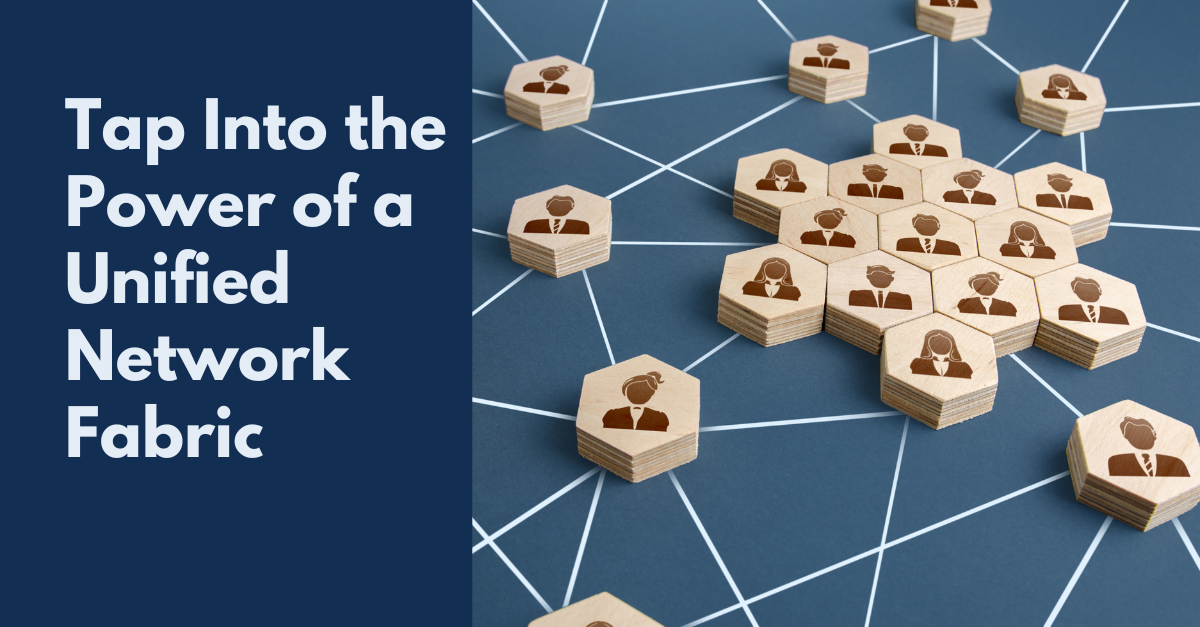In today's digital landscape, businesses are increasingly reliant on a complex web of interconnected technologies. From on-premises to data centers to cloud environments and remote edge locations, data is flowing constantly, driving critical business operations.
To effectively manage this intricate ecosystem, a unified network fabric emerges as a critical enabler.
What is a Network Fabric?
A network fabric is a comprehensive, end-to-end network architecture that seamlessly integrates various network domains, including:
- On-premises: Local Area Networks (LAN), Wi-Fi, and other internal networks.
- Edge Network: Dark fiber, Wide Area Networks (WAN), and interconnectivity between sites and services.
- Data Center: High-performance networking between servers, storage, and cloud platforms.
- Cloud Networking: Communication within and between cloud service provider infrastructures.
The Fabric Advantage: Consistent Policy and Enhanced Network Security
Each of these network domains has unique security and operational requirements. However, operating them independently can lead to:
- Inconsistent security policies: Difficulty in enforcing consistent security measures across the entire network.
- Security gaps: Exploitable vulnerabilities due to misconfigurations or unpatched systems.
- Complex troubleshooting: Challenges in identifying and resolving issues due to fragmented visibility.
- Increased risk: Heightened exposure to data breaches, compliance violations, and business disruptions.
A network fabric addresses these challenges by:
- Applying consistent security policies: Enforcing security rules and best practices uniformly across all domains, improving network security posture.
- Improving visibility and control: Providing a centralized view of the entire network, that enables rapid troubleshooting and fault remediation as well as providing end-to-end proactive threat detection and response.
- Enhancing operational efficiency: Automating network management tasks, reducing manual effort and human error enhancing overall service availability.
- Optimizing performance: Delivering predictable and reliable performance for all applications, regardless of location.
Why End-to-End Consistency Matters for IT Networks
In today's data-driven world, data breaches and outages can have severe consequences:
- Reputational damage: Loss of customer trust and brand value.
- Financial losses: Fines, penalties, and revenue loss due to service disruptions.
- Compliance violations: Failure to meet regulatory requirements, such as GDPR or HIPAA.
- Loss of intellectual property: Exposure of sensitive data and trade secrets.
For organizations dealing with highly regulated data, the board of directors bears responsibility for ensuring appropriate data handling. Failing to implement a robust network fabric architecture can be viewed as a failure to exercise due diligence and due care.
In an era of rapid digital transformation, a unified network fabric is no longer a luxury but a necessity. By providing a consistent, secure, and efficient foundation for all network operations, a fabric empowers organizations to:
- Accelerate digital initiatives: Quickly deploy new applications and services safely and securely.
- Improve business agility: Adapt to changing market demands with greater speed and flexibility.
- Reduce operational costs: Streamline network management, right-size network services without over-provisioning and minimize downtime.
- Enhance customer experience: Deliver high-quality services with consistent performance and reliability.
CIOs, CTOs, and IT Directors should carefully evaluate their current network infrastructure and consider the benefits of a network fabric approach. By investing in a unified and secure network foundation, organizations can unlock new levels of agility, resilience, and innovation.
Read the full article on the Technium Blog. Quantum Sol LLC. is affiliated with Technium, Inc.

